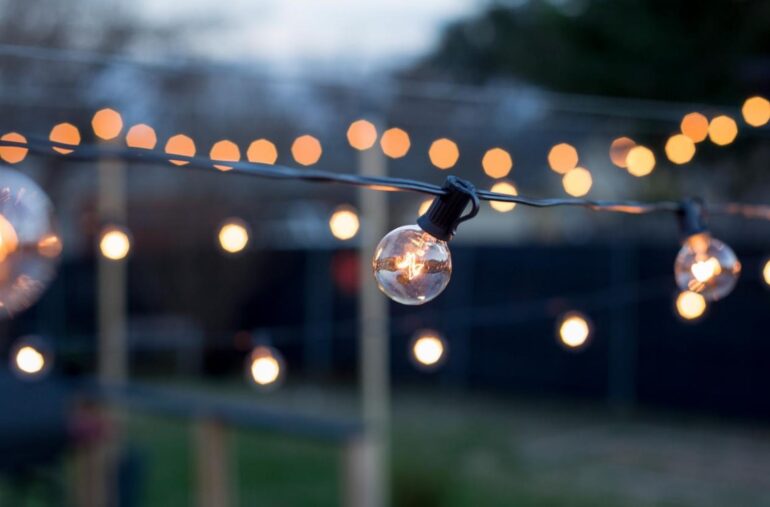Temporary lighting is a versatile and indispensable aspect of DIY electrical projects, capable of illuminating workspaces, events, and outdoor gatherings. Whether you’re an avid DIYer or a casual hobbyist, mastering temporary lighting can significantly enhance your electrical prowess.
In this comprehensive guide, we’ll delve into the world of DIY temporary lighting, offering valuable insights and expert tips.
Safety Precautions for Electrical DIY Projects
Before we embark on our journey into the realm of temporary lighting, safety must be our paramount concern. Electrical projects inherently carry risks, but with the right precautions, you can ensure your well-being.
Always switch off the power supply, use insulated tools, and wear appropriate safety gear, such as gloves and goggles. Additionally, familiarize yourself with local electrical codes and regulations to avoid accidents and ensure compliance.
Benefits of DIY Temporary Lighting Setups
Why should you consider DIY temporary lighting? Well, the advantages are plenty. First and foremost, it offers flexibility. Temporary illumination can be customized to suit your specific needs, allowing you to adapt to different situations effortlessly.
Whether you’re working in a dimly lit basement or hosting a backyard soirée, temporary illumination can be tailored to fit the bill.
Moreover, it’s cost-effective, saving you money compared to permanent installations.
Permanent lighting fixtures require more significant investments in terms of materials and labor, while temporary solutions can be set up and taken down with ease. This cost efficiency makes temporary illumination particularly attractive for short-term needs or events.
Tools and Materials Needed for the Project
To embark on your DIY journey, you’ll need some essential tools and materials. The basic toolkit should include wire strippers, pliers, a voltage tester, electrical tape, and wire connectors. These tools are your companions in crafting safe and effective solutions.
For materials, you’ll require electrical wires, fixtures, bulbs, extension cords, and a power source, such as a generator or an outlet. When selecting wires, ensure they are of the appropriate gauge to handle the load and length of your temporary circuit.
Lamp fixtures come in various shapes and sizes, so choose ones that align with your aesthetic vision and functional requirements.
Step-by-Step Guide to Creating a Temporary Lighting Circuit
- Plan Your Layout: Determine where you need lighting and sketch out the layout. Take into account the placement of fixtures, power sources, and potential obstacles.
- Calculate Wattage: Add up the wattage of all your bulbs to avoid overloading the circuit. This step is crucial in preventing overheating or electrical fires.
- Prepare Wires: Cut and strip wires to the appropriate lengths. Ensure they are long enough to reach the fixtures and power source comfortably.
- Connect the Circuit: Use wire connectors to join wires securely. Follow proper color-coding conventions (usually black for live, white for neutral, and green or bare for ground) to maintain safety and consistency.
- Mount Fixtures: Install fixtures at designated locations, ensuring they are securely fastened and the bulbs are properly inserted.
- Test the Circuit: Use a voltage tester to ensure everything is connected properly and there are no exposed wires. Test each fixture to confirm they illuminate as expected.
- Power Up: Finally, connect to a power source and enjoy your illumination. Be vigilant for any flickering lamps or unusual behavior, as these may indicate wiring issues.
Tips for Choosing the Right Light Fixtures
Selecting the right fixtures can elevate the ambiance of your quick setup. Consider the aesthetics, functionality, and energy efficiency of the fixtures. LED lights are energy-efficient and come in various styles, making them a popular choice.
For a rustic look, opt for pendant lamps, while floodlights are ideal for illuminating larger spaces. Remember to match the fixtures with your overall design concept.
Creative Ideas for Designs
Creative ideas for designs can take your projects and events to the next level, infusing them with a unique and captivating ambiance. Consider string glares, those whimsical, versatile illuminations that can be draped gracefully across outdoor gatherings, instantly transforming them into enchanting spaces.
Mason jar lanterns offer a rustic, warm glow perfect for garden parties, while paper lanterns bring an elegant touch to weddings and indoor events.
Candlelit centerpieces infuse intimate dinners with a cozy, romantic atmosphere, and Edison bulbs make a bold statement with their vintage charm.
Energy-Efficient Options
In today’s eco-conscious world, energy efficiency is a crucial consideration. LED bulbs are the go-to choice for energy-efficient temporary illumination.
They consume significantly less electricity, emit less heat, and have a longer lifespan than traditional incandescent bulbs. Additionally, motion sensor lamps can be a smart choice for outdoor events, automatically turning off when not needed.
Troubleshooting Common Issues

Even with the best planning, hiccups can occur in your temporary illumination setup. Here are some common issues and how to troubleshoot them:
- Flickering Lights: Check for loose connections and replace faulty bulbs. Flickering can also be caused by voltage fluctuations, so consider using voltage stabilizers or surge protectors.
- Overloaded Circuit: Reduce the number of lamps on the circuit or use lower-wattage bulbs. Overloading can lead to overheating, tripped breakers, or damaged wiring.
- Uneven Lighting: Adjust fixture placement or use diffusers to distribute light evenly. Sometimes, simple adjustments can make a significant difference in the quality of illumination.
Temporary Lighting for Outdoor Events and Parties
Temporary lighting for outdoor events and parties is a game-changer, elevating the atmosphere and ensuring your gatherings are unforgettable. Whether it’s a tranquil garden soirée or an energetic outdoor celebration, the right illumination can set the mood and create a magical ambiance.
Consider solar-powered stake lights to guide your guests along garden paths, creating a charming, well-lit journey. Tiki torches filled with citronella oil not only provide light but also keep pesky insects at bay, enhancing both the illumination and comfort of your event.
Colorful lanterns hanging from trees add a festive touch, while fairy lamp canopies bring a dreamy, enchanting quality to your outdoor space.
Conclusion: The Satisfaction of DIY Temporary Lighting

In conclusion, DIY temporary lighting opens up a world of possibilities for electrical enthusiasts. Not only does it offer practical benefits, but it also allows for creative expression.
By following safety precautions, selecting the right tools and materials, and embracing energy-efficient solutions, you can create stunning temporary lighting setups that will leave a lasting impression.
So, roll up your sleeves, unleash your creativity, and bask in the satisfaction of illuminating your world, one DIY project at a time. Happy lighting!




